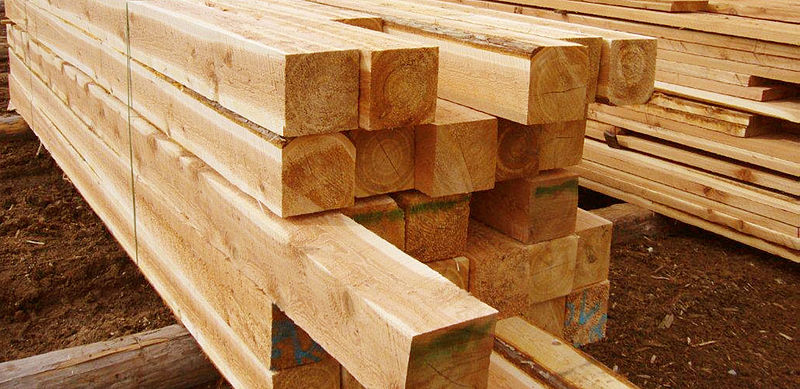Lumber prices decrease after the initial spike sparks inflation fears
June 24, 2021
A COVID-19 era spike in lumber prices caused inflation concerns around the country, but lowering prices are distilling fears that it will be a long-standing issue.
The price of lumber such as for homebuilding has been on the rise in recent months, with a May high of more than $1,700 per thousand board feet, according to reporting from Business Insider.
Since then, however, lumber prices have been on the decline, with lumber futures for July at a price of $1,009.90 per thousand board feet, according to The Wall Street Journal.
Presumably, the cause for the increased lumber prices has been shortages from the coronavirus pandemic, as Federal Reserve Chair Jerome Powell noted at a press conference on June 16.
Because of the pandemic, more and more people were put out of work either due to store closures or stay at home orders. On top of that, many people had to leave work after j either contracting COVID-19 themselves, or having a loved one test positive for it.
At the same time, the demand for housing has risen as people have decided to expand their living quarters or to move to another neighborhood or state.
The opposing forces of more demand and less labor have resulted in less supply, resulting in the increase in prices of lumber, as with other in demand goods during the pandemic.
As a result of this increase in wood prices, homebuilding has slowed down. The demand for more housing has increased throughout the pandemic, but lumber is necessary for the most critical part of homes: their frames, called studs.
Without studs, it doesn’t matter how much plaster or how many bricks are available. Wood is what holds the whole structure up.
“Higher costs and declining availability for softwood lumber and other building materials pushed down builder sentiment in June,” homebuilder and National Association of Home Builders Chairman Chuck Fowke said on CNBC’s After Hours. “These higher costs have moved some new homes beyond the budget of prospective buyers, which has slowed the strong pace of home building.”
However, lumber prices are starting to come down, which will likely have a positive impact on homebuilding and other industries that require large stocks of wood.
This decline came from fears that the spike in lumber prices was a sign of inflation. The fear of inflation was due to the Federal Reserve’s easy money policies that include extremely low interest rates, the
printing of money and a general laissez-faire attitude towards increasing fears, with insistence that the U.S. economy is on the right track.
Since the prices were reducing on their own, it quelled some fears that the rise was a sign of inflation.
“But over time it seems likely that these very specific things that are driving up inflation will be-will be temporary,” Powell said at his press conference. “And if we see inflation expectations and inflation-or inflation moving up in a way that is really materially above what we-what we would see as consistent with our goals, and persistently so, we wouldn’t hesitate to use our tools to address that. That’s-price stability is half of our mandate, and we would certainly do that.”








